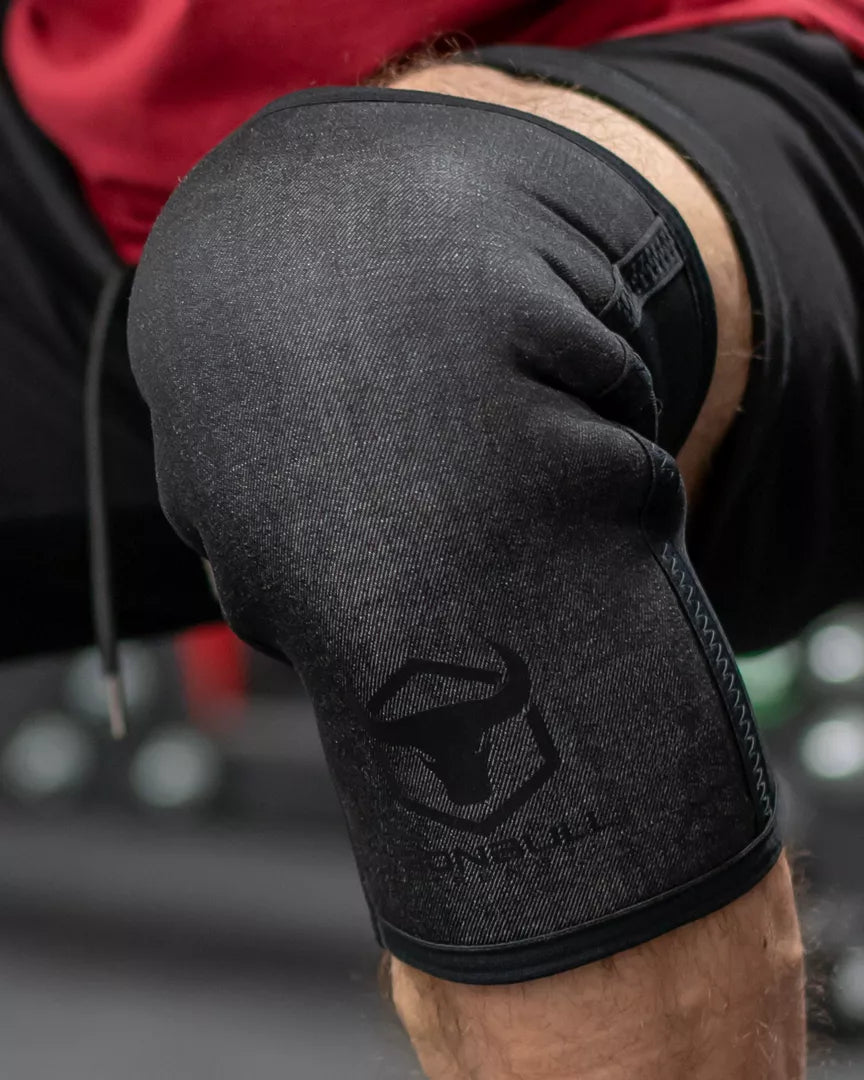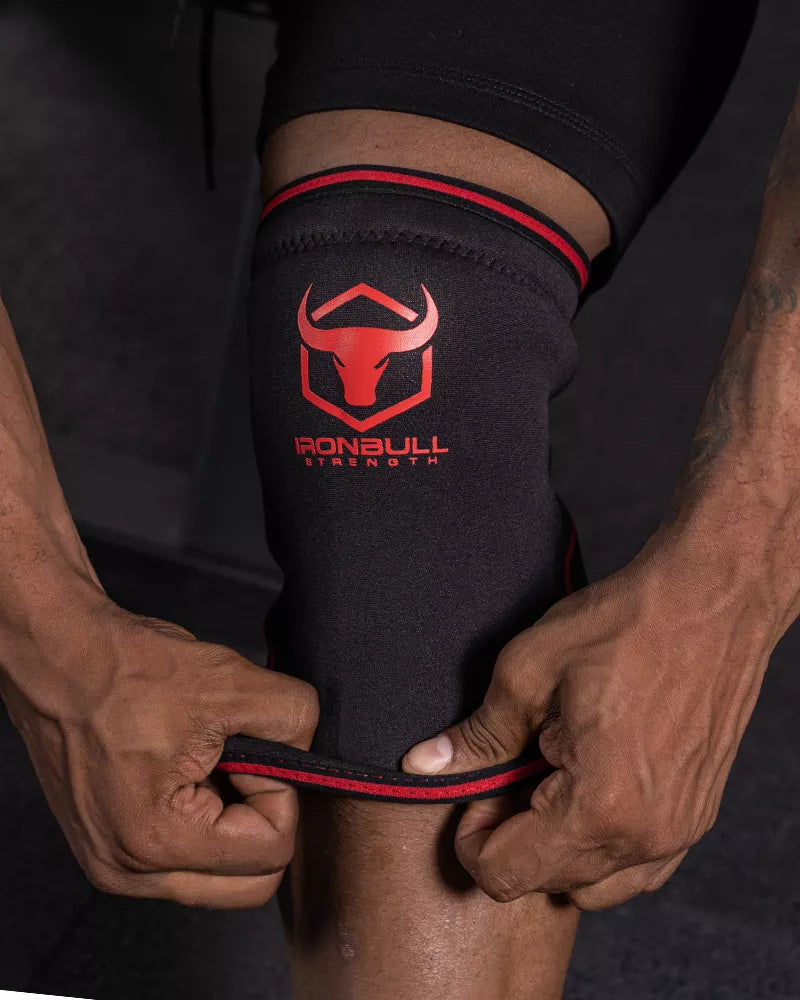Do Knee Sleeves Help You Squat More?

If you’ve spent any time in the gym, you’ve probably seen lifters wearing compression sleeves on their knees while squatting. Some swear by them, claiming they add pounds to their squat, while others see them as just another piece of unnecessary gear. So, do they actually help you lift more weight, or is it just a placebo effect?

The truth is, these sleeves offer real benefits—but only if used correctly. In this guide, we’ll break down how they work, whether they can actually increase your squat, and whether they’re a worthwhile investment for your training.
What Do Knee Sleeves Actually Do?
The primary purpose of compression sleeves for the knees is to provide warmth, support, and stability during lifting sessions. Made from dense neoprene, they wrap tightly around the joint to improve blood flow and keep everything feeling secure under heavy loads. Unlike knee wraps, which store elastic energy and physically assist the movement, sleeves work in a more passive manner, enhancing comfort and reducing strain.
Related: Hidden Joint Risks in Raw Lifting
One of their most valuable functions is keeping the knee joint warm. When lifting heavy, maintaining blood flow to the area helps prevent stiffness and discomfort, particularly between sets. This can lead to better movement efficiency and reduced injury risk over time.
Another key benefit is the compression itself. By applying constant pressure to the knee, these sleeves help reduce inflammation, minimize post-workout swelling, and provide a slight sense of stability, which can be beneficial for those recovering from previous injuries or dealing with occasional knee discomfort.
Can They Actually Add Weight to Your Squat?
While wearing a pair of high-quality knee sleeves won’t instantly turn you into a powerlifting champion, they can contribute to a stronger squat in several ways.
First, they improve proprioception—the body’s ability to sense positioning. With firm compression around the joint, lifters often feel more confident and in control, which can lead to better form and stability. A more stable squat means greater power output, especially when pushing close to max effort lifts.
Second, certain sleeves—especially thicker 7mm options—provide a slight rebound effect at the bottom of the squat. This is not the same as knee wraps, which create significant elastic force, but a snug pair of sleeves can offer a subtle assist when driving out of the hole. While the difference may be small, for some lifters, this extra bit of support could mean hitting an extra rep or adding a few more pounds to their lift over time.
Related: Why You Should Wear Knee Sleeves for Squats
Who Benefits the Most from Knee Sleeves?
Not every lifter needs knee support, but there are certain groups that will see significant advantages from using them:
- Strength Athletes & Powerlifters: Those squatting at high intensities (80%+ of their max) frequently will benefit from additional support and compression.
- Lifters With Previous Knee Injuries: Compression helps minimize pain and allows for smoother movement patterns, making squatting more comfortable.
- Intermediate to Advanced Lifters: Beginners should focus on perfecting technique, but once heavy weights become the focus, sleeves can help maintain joint integrity.
If you’re someone who squats heavy and frequently, investing in a solid pair of knee sleeves could make a noticeable difference in how your joints feel over time.
When Are Knee Sleeves Not Necessary?
While they have benefits, they’re not essential for every lifter. If you’re just starting out, the best thing you can do is build a strong foundation without relying on extra gear. Developing natural knee stability and core strength should take priority before incorporating supportive accessories.
Similarly, if you’re training in moderate rep ranges (8-12) or lifting at lower intensities, you may not see a dramatic benefit. Sleeves are most useful for heavy, low-rep sets, where joint stability and control are critical.
Another common mistake is becoming overly reliant on them. Some lifters wear their sleeves for every single set, even when warming up with an empty bar. While they provide comfort, it’s important to allow your knees to adapt naturally to training stress as well.

How to Properly Use Knee Sleeves for Squats
Using them correctly is key to getting the most out of them. Many lifters simply slide them on without much thought, but small details make a big difference.
First, choose the right thickness. For squatting, 7mm knee sleeves are the gold standard, offering the most support. If you’re looking for a bit more flexibility, 5mm knee sleeves are great for general strength training and functional fitness.
Putting them on correctly can be a challenge, especially if they have a tight fit. The easiest way is to fold them in half, slide them up over the ankle, then unfold them into position just above and below the knee cap. This ensures they sit properly and don’t shift around during training.
Once they’re on, squat a few times before starting your working sets to ensure they feel secure. They should be snug but not restrict circulation. If they’re slipping down or bunching behind the knee, they may be too loose or too tight.
Related: How Tight Should Your Weightlifting Belt Be? The Ultimate Guide for Every Lifter
The Impact on Squat Mechanics
A well-fitted pair of knee sleeves won’t drastically change how you squat, but they can refine movement quality by reinforcing knee tracking and stability. Some lifters notice a smoother descent and a stronger, more controlled push from the bottom.
However, they shouldn’t be used as a crutch for poor mobility or bad technique. If you struggle to hit proper depth or your knees cave in under heavy loads, sleeves won’t fix those problems—those issues need to be addressed through better training and mobility work.
Related: Knee Pain When Squatting: Causes, Prevention, and Treatment Strategies
Taking Care of Your Knee Sleeves
If you don’t maintain your sleeves, they will start to smell terrible. Sweat, bacteria, and chalk buildup mean they’ll absorb odor quickly.
The best way to clean them is to soak them in warm water with mild detergent, then let them air dry completely. Some lifters add vinegar or baking soda to help eliminate lingering smells. Avoid using high heat or putting them in a dryer, as this can break down the neoprene over time.
A simple way to keep them fresh is to let them dry out completely between workouts instead of tossing them into a gym bag right after training.
Wrapping it Up
If you take squatting seriously, knee sleeves are a smart investment. They won’t automatically add 50 pounds to your lift, but they will help your knees feel better, allow for smoother movement, and provide support when handling heavy weights.
They’re especially valuable for lifters who train with intensity and frequency, as they reduce wear and tear on the joints over time. And if you’ve ever dealt with knee pain, the warmth and compression can make all the difference in keeping you comfortable under the bar.
If you’re looking for competition-ready, high-performance knee sleeves, check out Iron Bull Strength’s Knee Sleeves — designed for serious lifters who demand durability and support. Whether you’re pushing for a PR or just want extra joint stability, the right pair can keep you squatting strong for years to come.


